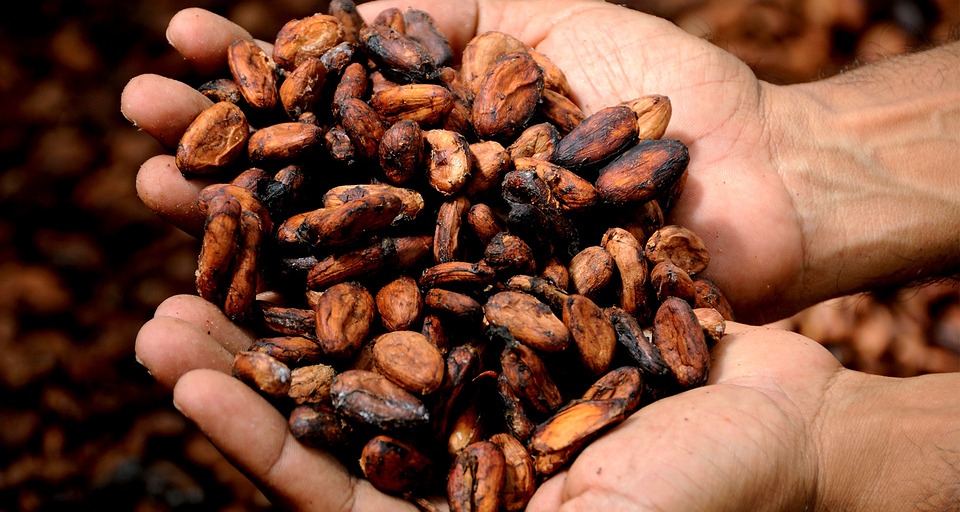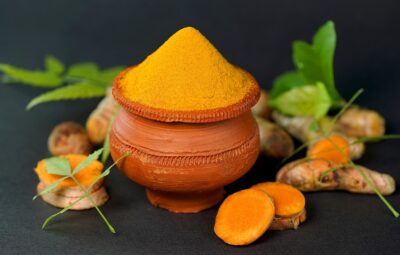Check your pulse. Chocolate is one of the most beloved foods on earth, and there is no need to convince someone who already has it.
Chocolate is the best food because it is delicious and has a lot of different flavors. Even the scientific name for chocolate, Cacao Theobroma, comes from the Greek word for “food of the gods.”
Many people who adopted the keto lifestyle avoid cacao because it is often paired with sugar, which is the enemy of ketosis.
However, the association between chocolate and sugar is a new thing in cacao’s long history. The chocolate bar is a newer invention than the typewriter or microphone.
Aztec warriors used cacao as a source of health and fuel before it was associated with decadence and indulgence. Humans have long known that cacao can improve strength and health.
A Brief History of the Cacao Bean
The cacao tree prefers to grow in the dark under the shaded canopy of taller trees. It is native to the Amazon rainforest in a region now shared by Colombia, Peru, and Brazil, and it can grow up to 65 feet in height.
Although this plant does very well in shady areas, there is no record of how it became so widely cultivated and traded that it made its way from the Amazon to Mexico. Most people credit the Mayans for bringing cacao northward.
Genetic dating analysis suggests that the species has been in Central America and Mexico for approx. 4000 years.
The history of chocolate begins with the Olmec people. The evidence that has been gathered from archeological finds suggests that as early as 1900 BCE, they were consuming a cacao-bean drink. The Mayans are believed to have primarily consumed fermented cacao beans as a drink.
No culture is more associated with chocolate than the Aztec people, who literally used it as a form of currency! That’s correct; people at the market paid with cacao beans, which can’t be argued to have any value. The emperor Moctezuma believed that chocolate consumption should only be limited to the military because he thought only warriors should have chocolate power.
Like the ancient Aztecs, people today enjoy cacao as a tea-like drink, made with ingredients native to the Americas such as maize, vanilla, white cinnamon, and chili peppers.
Cacao and sugar only began their relationship when colonizers brought it back to Europe in 1528 and introduced it to King Charles of Spain as “brown gold”––perhaps the worst descriptor of chocolate ever coined!
Sugar was added to the recipe to make it more appealing to the wealthy people who were plundering the country. Chocolates that are sweetened and meant to be drunk slowly became a sign of luxury and wealth. Hence the birth of chocolate’s association with decadence.
A revolution in the 1840s led to the widespread use of cacao in the form of chocolate bars. This was popularized by John Cadbury, a famous egg layer. This is when people learned how to get cocoa butter out of cocoa nibs, making chocolate into the smooth, rich food that melts in your mouth and that we all love today.
Top 7 Health Benefits of Cacao
Chocolate affects your brain by causing the release of the “happiness neurotransmitters” serotonin, dopamine, and endorphins. Chocolate can fight damaging free radicals and protect your mitochondria, just like coffee.
Chocolate Hackers are people who know how to use chocolate to improve performance in ways that are not well known. Cacao has a positive effect on the body as a whole, improving blood flow and cognition while also changing gut bacteria for the better. Some of the benefits of chocolate are that it can improve your mood, give you energy, and help you lose weight.
1.) Cacao is full of healthy fats
Cocoa butter is a vegetable-based fat that is useful for many purposes. Most of its mass is healthy stearic acid, a great source of fat.
Stearic acid has no effect on cholesterol levels, but it may improve energy production in cells and help people feel full for longer. Cocoa butter is an ideal fat source for people following a keto diet because it is high in healthy fats and low in carbs.
2.) Dark chocolate helps prevent cardiovascular disease
It is a big deal that chocolate can decrease the risk of developing cardiovascular disease, which is the leading cause of death in the developed world. The risk for myocardial infarction decreased by 77% for people who consume chocolate, according to one study in Italy.
3.) Don’t forget the flavanols!
Dark chocolate is rich in flavanols, a chemical compound that has been shown to reduce oxidative stress in the body. Flavanols have been shown to improve blood pressure and vascular health.
4.) Increased insulin sensitivity
According to recent studies, dark chocolate may help lower the risk of diabetes by promoting insulin secretion. The fact that it balances your blood helps your body enter ketosis.
5.) Improved liver health
Chocolate is actually good for your liver! Chocolate consumption is associated with increased enzyme production in your liver, which enables it to better process toxins entering your body.
6.) It’s an age-old old-age secret
Do you know anyone who doesn’t like chocolate and is old?
Chocolate’s ability to prevent arterial stiffness may help explain why an aging heart is softer for chocolate.
Chocolate has been shown to be an effective way to prevent cardiovascular disease, and has been suggested as a cost-effective national health strategy by Australia. If everyone ate $40 of dark chocolate each year, it would save lives and lower healthcare costs.
This means that it is not only good for cancer-fighting properties but also due to its inherent antioxidant richness.
Elderly people have a lot of time to enjoy chocolate!
7.) Good gut health
If you haven’t already, start embracing your love of dark chocolate! Its positive effect on the biota of your stomach leads to better overall health. The polyphenols in chocolate provide micronutrients that your digestive system needs.
8. CHOCOLATE FOR A BETTER MOOD
Chocolate can make you feel better when you’re under a lot of stress. The participants were asked to do some math problems involving subtracting threes and sevens as well as a test that would measure how well they could pay attention for a sustained period of time. Cocoa flavanol drinkers had better cognitive performance and reported less mental fatigue.
9. CHOCOLATE MAKES YOU EAT LESS
I really enjoy how chocolate consumption reduces my appetite. A study gave participants 100 grams of milk or dark chocolate two hours before being served an all-you-can-eat lunch and then measured how much they ate. Those who ate dark chocolate consumed 17% fewer calories at their next meal, compared to those who ate milk chocolate. The casein in milk binds to the polyphenols in chocolate, making them unavailable to your body, which is why chocolate and milk don’t go well together.
The study found that people could tell the difference between the mood-altering effects of theobromine at doses as low as 100 to 560 mg.
10. CHOCOLATE FOR GLOWING SKIN AND SUN PROTECTION
Chocolate may improve your skin health by promoting blood circulation. A study was conducted in which two groups of women consumed either a high-flavanol or low-flavanol cocoa powder over the course of 12 weeks. While the low-flavanol group did not see any improvement in their skin health, those in the high-flavanol group saw, on average, a 25% reduction in redness caused by exposure to UV light.
The group who consumed the high-flavanol diet also showed increased skin density and thickness, superior hydration, and less transepidermal water loss.
DOES CHOCOLATE HAVE CAFFEINE?
Yes, but in much smaller amounts than coffee. If you eat less dark chocolate, you will be able to fall asleep more easily. The molecule in coffee that gives energy is called theobromine. The primary alkaloid in cocoa that has positive effects similar to caffeine is theobromine. Theobromine is present in high concentrations in dark chocolate, measuring between 237-519 mg per 50g.
THE BENEFITS OF THEOBROMINE
Theobromine has a steadying effect on energy levels in the body without overstimulating the central nervous system. This gentle energizing effect is enjoyable and does not cause jitters like some energy drinks. This means that theobromine produces a more prolonged calming effect than other substances.
Cocoa has been linked to better cognitive function. The immediate cognitive effects of chocolate are primarily due to the caffeine and theobromine it contains. A study that compared the effects of cocoa powder to an equivalent caffeine and theobromine powder found that both powders improve cognitive and mood assessments equally.
According to research, theobromine may be the component that makes dark chocolate so addictive. A study showed that people liked a new drink more when it was mixed with theobromine.
THE PITFALLS OF CHOCOLATE
MOST CHOCOLATE CONTAINS SUGAR
Although research suggests that cocoa can help keep veins and arteries healthy and improve sensitivity to insulin, sugar has the opposite effect. Eating sweetened chocolate is still not good for you. According to the text, the only recommended sweeteners are Stevia, erythritol, and xylitol.
In one study, rats who were fed a high-fat, high-sucrose diet for 4 weeks displayed insulin resistance, and their endothelial nitric oxide synthase (eNOS) decreased. eNOS is responsible for creating nitric oxide in blood vessels. Studies have shown that sugar has a negative effect on blood vessels, regardless of whether a person is obese or has insulin resistance. Therefore, sugar is bad for your health even if you are otherwise healthy.
CHOCOLATE CAN CONTAIN MOLD
Many chocolate products contain Meaningful levels of mold toxins due to intensive farming techniques, poor agricultural practices, and poor storage practices. In one study, 98% of samples tested contained ochratoxin A, which is a more insidious and dangerous form of mycotoxin. The study found that 80% of those contaminated with ochratoxin also had aflatoxin. The presence of multiple mycotoxins amplifies the effect of each one.
Cacao trees are a tropical crop, which makes them highly susceptible to fungus and mold. The harmful mold toxins are not destroyed when the beans are roasted. Beans aren’t just susceptible when they’re on the tree. If you don’t want mold and fungi to grow on your food, you shouldn’t let it sit for a long time. The good news is that a study found that the processing of cocoa beans into a finished product decreased the amount of ochratoxin A by 93.6%. I’ve found that mold toxins in chocolate can vary a lot depending on the batch and brand, and a brand that has “clean” chocolate one month may not have it the next month.
Keep the following in mind while selecting and eating chocolate:
- Make sure your chocolate is at least 85 percent dark chocolate
- European chocolate tends to be lower in mold toxins, as they have stricter government limits than the US
- Take activated coconut charcoal with chocolate to bind some of the mold toxins like I always do
HOW TO GET MORE CHOCOLATE INTO YOUR DAY
Your options are almost limitless. Try this unique option to get more chocolate into your diet:
- Drink cacao tea
You can still have your chocolate fix without consuming too many carbs and sugar by choosing the right route. It all depends on how creative you want to be in the kitchen and how long you’re willing to wait for some chocolatey deliciousness!







